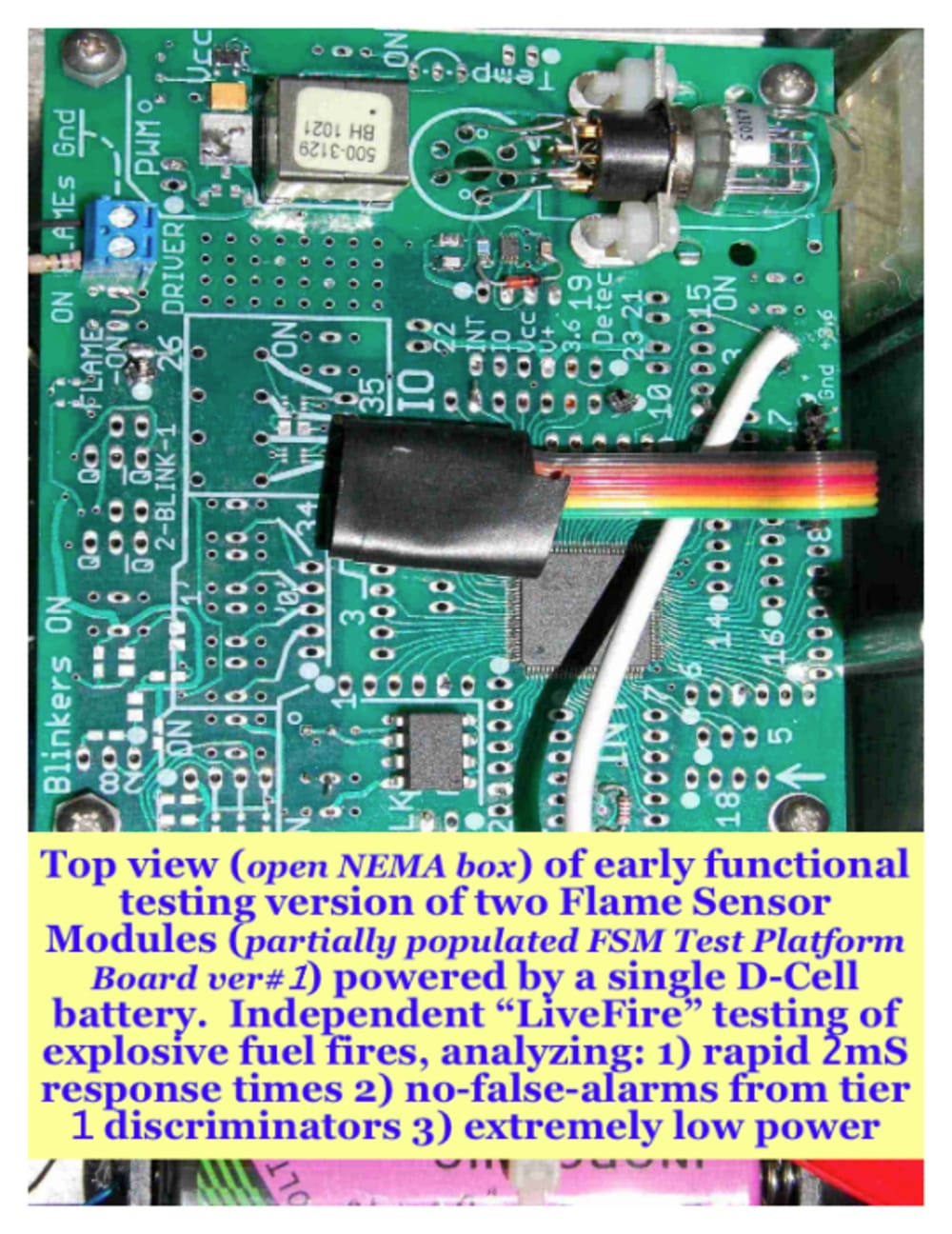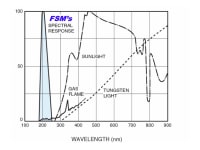Currently available, state-of-the-art, Flame Detectors are too large, too heavy, too power hungry, too slow to respond, and completely unsuitable for many applications requiring: low weight and smaller size, operations on next-to-no power, an immediate and effective response of fire suppression equipment for both personnel safety and expensive/critical equipment protection, and safeguards in areas with access difficulties, no local power, or a need for less cabling.
With newer requirements of: system cabling reduction by integrated power using energy harvesting, or a battery (only if absolutely necessary) lasting at least 2 years; and, wireless networked communications for multiple sensors in a protection zone; flame detection in less than 4mS for rapid fire extinguishment; operational in daylight conditions; and NO false-alarms; clearly the need for the development of a new generation Flame Sensor is evident.
New Way Solutions' modular approach to its new Wireless Fire Detector (WFD) system, enabled by an innovative Flame Sensor Module (FSM) architecture and other latest-technology advancements, meets and exceeds all of the current requirements for the next generation Flame Sensors. Public (SBIR) and some Private funding for ongoing Research and Development, to date, have created operational pieces of the future WFD with promising, early test results.
A few applications and Market niches include: Art Museums and other high-priced collections; operational Aircraft dry bays; any areas were hydrocarbon fuels (gasoline, alcohol, diesel, methane, kerosene, propane, JP-4, JP-8, all blends of BioFuels, as a few examples) are stored, transferred, or used; Network Server Farms and other computer-complexes; Petroleum and Chemical Processing plants; Commercial Aircraft Lavatories and Cargo Holds; various areas on Cruise Ships; storage and shipping cargo containers; etc.
The FSM currently being tested has already demonstrated its ability to repeatedly provide no-false-alarms reports of (just erupting) flames within 2mS using both (240nm, low power) UVC-LEDs (as a self-test source) and actual JP-8 and various blends of BioFuels. While "watching" for flames, the entire FSM draws less than 1mWatt of power, making it a prime candidate for vibration (already tested) and other forms of energy harvesting power sources, and for extended-term operations on a single primary cell where maintenance access and schedules permit their usage. Special circuits enable sensor sensitivity adjustments to be made, spanning +/-100%, as applications warrant. A custom sensor driver (including an 'event'-driven, dual-duty-cycle pulse width modulator), all CMOS circuits including a CoolRunner II CPLD, the lowest operating frequency and voltage rails possible, all combine to reduce the power needs from current technology products' whopping 2.26watts down to a miniscule (less than) 1mWatt. In-Circuit-Serial-Programming permits application specific Tier 2 Discriminators to be encoded that further define a "real-fire" duration and intensity, based upon specific application needs.
This ambitious development program includes the testing of custom-designed ISM radio and IR Optical Wireless Networking modules, a full range of environmental tests, and complete WFD system "live" real-applications testing. Design for Manufacturability and Maintainability are primary program goals, enabling automated mass-production assembly and testing of modules, where feasible.
Like this entry?
-
About the Entrant
- Name:Thomas Teall
- Type of entry:individual
- Hardware used for this entry:EAGLE for both Schematic Capture and Printed Circuit Board LayoutSoftware used for this entry:5SPICE for Analog (predesign) Simulations, XILINX IDE
- Patent status:none








